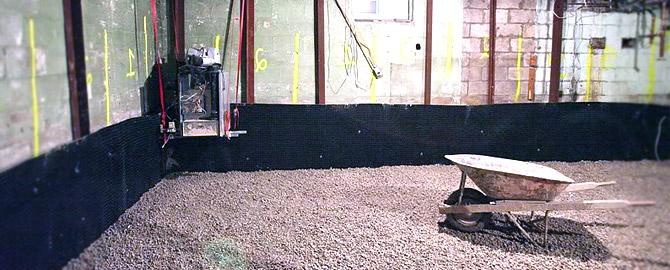There are many things in life that can be put off until the last minute without dire consequences, but foundation repair is not one of them. All structures need a strong, secure foundation in order to continue to stand and be stable. Your home is no different. Your home always requires a strong foundation in order to be able to support structural integrity. If you ignore cracks or shifts in your foundation, you could end up with huge, expensive, and dangerous results. That’s why underpinning might be the best option for you.
What Foundation Underpinning Is
Underpinning is when contractors reinforce your existing foundation, either to bring it up to code or make essential repairs. It’s a great solution for repairing poorly-built foundations or if the foundation has degenerated over time. The contractor starts out excavating small sections around the basement edges. He then pours the footings at depths lower than the original foundation and rebuilds the foundation wall in stages.
This is a delicate process and one that needs to be done by a professional. Once the deeper foundation walls have been finished, the contractor then digs up the basement floor and replaces it with a newer, deeper one. Homeowners often also use underpinning to install a higher ceiling in the basement, by digging out the basement foundation. In these cases, it is then called “basement lowering”.
Benefits
The benefits of this form of foundation repair are five-fold:
- The method enables you to increase your living space without increasing your property taxes.
- The value of your home typically increases by around 10%, because it’s based on the size of the living space.
- By creating a livable, finished basement you’re making an area that you can rent out if you want to.
- You’ve reinforced the strength of your foundation and decreased your risk of mold, mildew, and odour.
- You’ll save money in the future on heating and air conditioning, due to the improved insulation of your basement area.
Counting the Cost
Right, so the benefits are amazing, but what are the costs? That’s a fair question, but it’s something of a complicated answer. The cost of lowering a basement varies quite a bit. There are certain things though, that influence the cost, such as:
- The size of your basement
- The depth needed for excavation
- The current condition of your foundation
- The type of soil
- The number of support columns
- The relocation of plumbing lines
Toronto homes are built on strong foundations, but it’s absolutely crucial that you regularly check for any required foundation repairs. Underpinning is a rather extreme, but effective solution to many foundation problems. If you start noticing cracks or shifts in your foundation, it is time to contact your plumber in Toronto. Without making the repairs, you could end up with a number of other issues including leaks, basement flooding, energy waste, and most dangerously, an unstable foundation that threatens the structural integrity of your home.
Not to mention, if you don’t take care of the foundation issues, you’re really going to struggle to sell it (if you end up down that road later on). So many deals fall apart when the home inspection turns up issues with the foundation!
By implementing a typical underpinning and basement lowering project, you’ll have new main drains installed, end up with internal waterproofing and dry and healthy living space. All in, you’ll really increase the usability of your basement, and at the same time increase the value of your home and the strength of its foundation.

